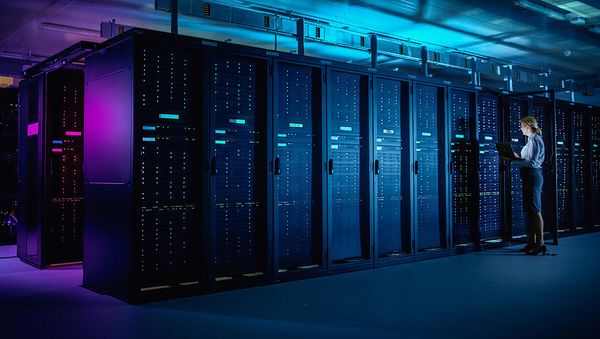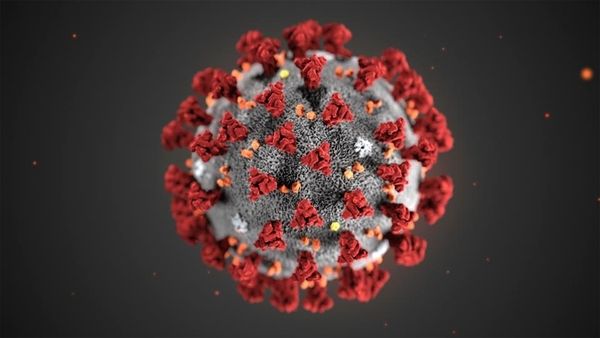
Why DCaaS Is the Future of Colocation
April 23, 2020
Understanding the Basic Architecture of Siri
April 30, 2020The coronavirus is a truly global crisis, affecting every continent, resulting in thousands of deaths and causing over a third of the world’s population to be locked down in their homes. It is very likely (and hopefully) a once in a century pandemic, in the words of Bill Gates, the likes of which have not been seen since the Spanish Flu killed 50 million people in 1918. Due to the novelty and near-unprecedented impact of this virus, health professionals and government officials alike are struggling to determine the best course of action to curb the spread of infection and prevent unnecessary deaths.
The issue is not the availability of data, it’s time. Every day spent clarifying research and testing drugs mean thousands of infections, hundreds of deaths and millions of dollars lost in economic output. Thankfully, artificial intelligence (AI) and machine learning systems are specially trained to compute vast amounts of data much faster than human analysts can, so they are well-placed to provide much-needed assistance in the fight against coronavirus.
Preventative Measures

Credit: GCN
Measures to predict and prevent the initial spread of the virus might not be much use to countries fighting infection now, but it’s worth noting that AI did play a role in forecasting the spread of coronavirus early on. BlueDot, a Canadian-run AI start-up focused on forecasting the risks of infectious diseases, predicted the spread of coronavirus in Hubei province in December 2019, nine days before the WHO released its initial statement warning of the new virus.
BlueDot’s outbreak risk software works by analyzing official sources and media in 65 languages, 100,000 documents per day around the world. Using this data it identifies the potential of disease outbreaks and anticipates impact by bringing into account variables such as flight itineraries or animal populations. Although this December prediction is of little practical use now, it continues to inform on the spread of coronavirus throughout the world.
Predicting the Spread
Another use of preventative AI was to predict the spread of the virus. In January, using data from search engines, mobile phone IPs, and international travel data, researchers at the University of Southampton were able to predict the movement of potentially infected people and determine which countries were most at risk of an outbreak.
Tracking the Virus
Though the initial outbreak may be far behind us, new infections are occurring every day, but with patients often not demonstrating symptoms for multiple days or even weeks it can be hard to track the spread of the virus. Thankfully, MIT has begun working on private testing kits linked to mobile devices that can predict at-risk areas and persons based on infection data.
SafePaths works by providing health care institutions with information on those in close have been in proximity to someone who has tested positive for the virus. Combining that information with other data from public sources can create a hypothetical map of areas that could be affected, allowing officials to better plan for new infection or quarantine procedures. All of this data is collated and analyzed by AI systems, which are able to work much faster than human analysts.
Collating Research
AI is also currently being used to compare and collate public health research. Clinical science is represented by a huge body of academic work that would normally require lifetimes of work to effectively compare and collate. With the coronavirus outbreak, time is of the essence, so data scientists are putting AI systems to work on finding answers from the research.
Ericsson recently reported that developer Manjeet Attri has been using his knowledge of data science to compute information on the virus, such as incubation, virality, and infection transmission. Another data scientist, Nikhil Korati Prasanna, is using similar methods to compare research on clinical outcomes in order to determine the feasibility of using alternative testing facilities.
Finding a Cure
Predicting and tracking the virus is, of course, an important first stage, but if we want to finally stop the spread of coronavirus it’s essential to find curative and preventative drugs. Thankfully, AI is helping with this stage too.

Credit: Singularity Hub
Another Ericsson software developer, Emmett Moore, is behind the effort to assess the effectiveness and side effects of drugs currently under development to eradicate the virus. Basing his machine learning system on keywords and phrases, it was set to analyze the literature to find information on the potential use and risks of drugs. The information can then be shared with the medical researchers developing the drugs, helping them to determine which direction to focus their efforts and, hopefully, more quickly discover a cure.
Developing an Action Plan
The WHO is leading the charge against the spread of the virus but in order to develop a practical and effective plan of action, their officials need information on how the virus works and where it has spread to. To ease the collection of information, the WHO has encouraged the dissemination of data between scientists and researchers.
The potential extent of the virus is still not yet clear, but allowing for the free exchange of virus data will help to feed AI systems. Hopefully, by collaborating with medical professionals, data scientists can provide important trends and predictions that will help stem the flow of new infections and develop more effective cures.
Moving Forward
The fact of the matter is we are only at the early stages of the coronavirus epidemic. We likely have many weeks and perhaps many months of dealing with the effects of the initial infection, not to mention the time spent on preventing future outbreaks. The work of AI is only just beginning.
Main Photo Credit: Forbes

